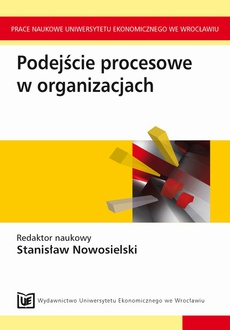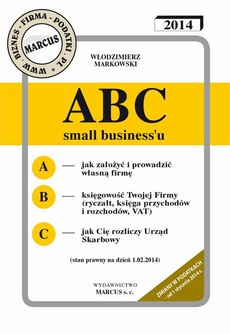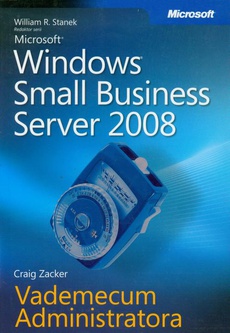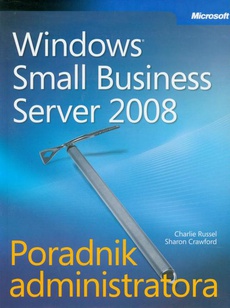POLECAMY
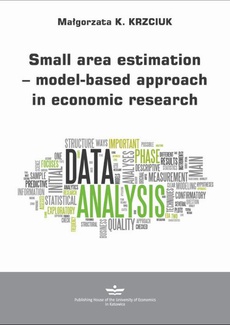
Small area estimation ‒ model-based approach in economic research
Autor:
Format:
ibuk
The main theoretical and exploratory objective of this book is to propose methods for predicting subpopulation characteristics and to analyse the properties of the predictors, taking into account the correlation between the random variables. The practical objectives include:
– adapting the methods of small area estimation, a model-based approach, for economic data obtained in longitudinal surveys;
– proposing and using the author’s overpopulation models belonging to the class of general linear mixed models;
– proposing and using original model verification methods;
– proposing and applying the author’s methods of prediction and assessment of prediction
accuracy of subpopulation characteristics for the proposed class of models;
– demonstrating the applicability of the proposed methods to real economic data – simulation studies conducted using the Monte Carlo method.
| Rok wydania | 2023 |
|---|---|
| Liczba stron | 178 |
| Kategoria | Publikacje darmowe |
| Wydawca | Wydawnictwo Uniwersytetu Ekonomicznego w Katowicach |
| ISBN-13 | 978-83-7875-886-0 |
| Numer wydania | 1 |
| Język publikacji | angielski |
| Informacja o sprzedawcy | ePWN sp. z o.o. |
Ciekawe propozycje
Spis treści
| Introduction | 5 |
| Chapter 1. Theoretical foundations of small area estimation | |
| 1.1. Main approaches in small area estimation – basic definitions and notation | 8 |
| 1.1.1. Design-based approach | 10 |
| 1.1.2. Model-based approach | 16 |
| 1.1.3. Model-assisted approach | 21 |
| 1.2. Superpopulation model and the steps of its construction | 26 |
| 1.2.1. Mixed models | 26 |
| 1.2.2. Special cases of linear mixed models with uncorrelated random effects | 32 |
| 1.2.3. Special cases of linear mixed models with correlated random effects | 36 |
| 1.2.4. Steps of model construction | 39 |
| 1.3. Development of small area estimation | 48 |
| 1.4. Applications of small area estimation | 51 |
| 1.5. Summary | 54 |
| Chapter 2. Cross-sectional and longitudinal economic surveys | |
| 2.1. Research conducted during one period | 56 |
| 2.2. Essence of longitudinal surveys | 58 |
| 2.3. Types of longitudinal surveys | 59 |
| 2.3.1. Panel studies | 59 |
| 2.3.2. Repeated time surveys with partial rotation | 65 |
| 2.3.3. Multi-period surveys with complete rotation | 67 |
| 2.4. Advantages and disadvantages of longitudinal surveys | 69 |
| 2.4.1. Advantages of time-repeated surveys | 70 |
| 2.4.2. Disadvantages and limitations of longitudinal surveys | 72 |
| 2.5. Summary | 75 |
| Chapter 3. Empirical best linear unbiased predictors | |
| 3.1. Empirical best linear unbiased predictors of Royall and Henderson | 77 |
| 3.1.1. BLU predictor of Royall | 78 |
| 3.1.2. Henderson’s best linear unbiased predictor | 80 |
| 3.2. Empirical best linear unbiased predictor and classification of linear mixed models | 82 |
| 3.2.1. EBLUP for type A models | 82 |
| 3.2.2. EBLUP for type B models | 83 |
| 3.3. EBLUP and the class of linear mixed models with correlated random effects | 84 |
| 3.4. Mean squared prediction error and its estimator | 85 |
| 3.5. Selected EBLUP modifications and their applications | 87 |
| 3.5.1. SEBLUP | 88 |
| 3.5.2. REBLUP | 90 |
| 3.5.3. SREBLUP | 92 |
| 3.5.4. GWEBLUP and RGWEBLUP | 93 |
| 3.5.5. Pseudo-EBLUP | 96 |
| 3.5.6. NPEBLUP | 99 |
| 3.6. EBLUP applications | 100 |
| 3.7. Summary | 102 |
| Chapter 4. Empirical best predictors and plug-in predictors | |
| 4.1. Empirical best predictor | 104 |
| 4.2. Plug-in predictor | 105 |
| 4.3. EBP and plug-in predictors, and linear mixed models with correlated random effects vectors | 107 |
| 4.4. Estimation of the mean squared error of EBP and plug-in predictors | 108 |
| 4.5. Applications of EB and plug-in predictors | 109 |
| 4.6. Summary | 111 |
| Chapter 5. Simulation studies | |
| 5.1. Dataset | 113 |
| 5.2. Simulation study – variant I | 116 |
| 5.3. Simulation study – variant II | 126 |
| 5.4. Simulation study – variant III | 134 |
| 5.5. Summary | 142 |
| Conclusions | 145 |
| Bibliography | 148 |
| List of figures | 175 |
| List of tables | 177 |










